10 top gardens to visit this bank holiday
Get out, have fun and be inspired by a riot of design ideas, planting schemes, colours and textures
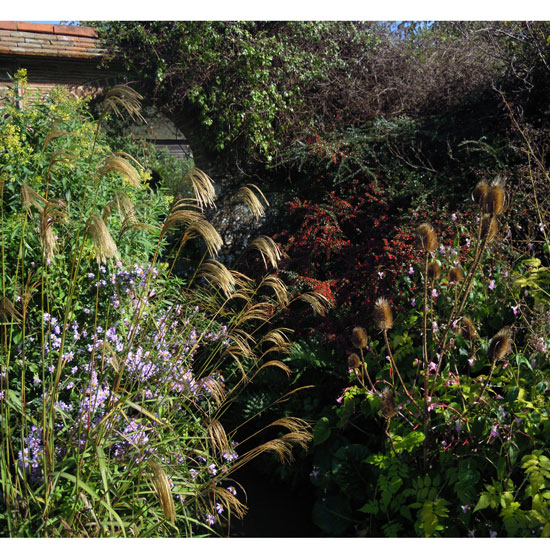
1. Great Dixter
A feast for the eyes, Dixter in Rye, Sussex is famous for its
dramatic planting displays. Über-creative head gardener Fergus Garrett
and his team are continuing and expanding on the famous plantsman Christopher Lloyd's
extraordinary work - breaking the rules, putting together surprising
colours and forms in exciting and dynamic ways, while the
successional planting combinations mean that the gardens look different
month to month. There are no empty holes in these beds; rather
they're stuffed full with beautiful, unusual plants of contrasting
textures and forms. Highlights include the Long Border and the
spectacular sub-tropical Exotic Garden. The Tudor house was
restored by Edward Lutyens, so expect to see an Arts and Crafts touch to
the garden layout too, including the hedging, which makes for
interesting enclosures of formal versus informal schemes. An
inspirational, energising place.
www.greatdixter.co.uk
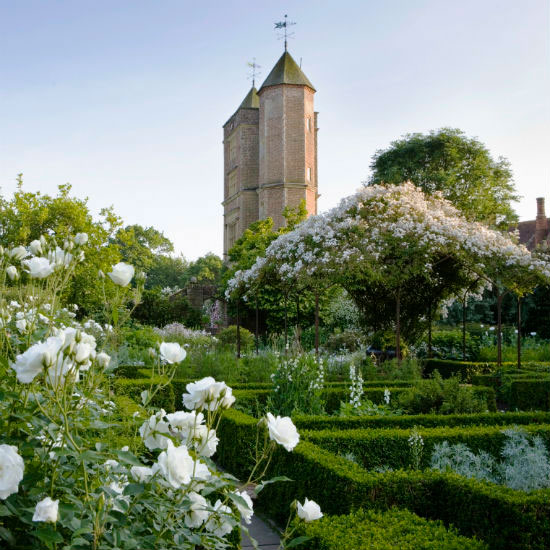
2. Sissinghurst
It may not be a great distance from Great Dixter, but the grand and
equally influential Sissinghurst couldn't be more different in style
from its rebellious neighbour. Combine a visit to both in one day if you
can, to fully enjoy the contrast. Created by Vita Sackville-West and
husband Harold Nicholson in the Thirties, each space or ‘room' in the
garden has a different planting scheme. Highlights include the Ancient
Nuttery, the Purple border, the Lime Walk and the world-famous and
much-copied White Garden, which includes soothing shades of white, grey
and green. Regarded by many the world over as the quintessential English
garden. www.nationaltrust.org.uk
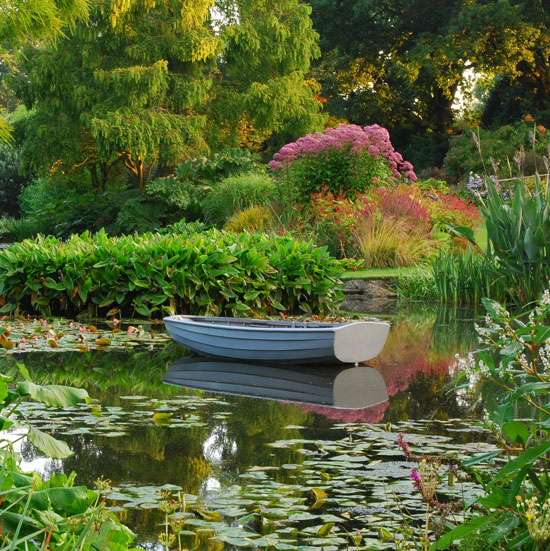
3. Beth Chatto's garden
Revered plantswoman Beth Chatto and her husband
started their stunning Essex garden in the Sixties. Each of the site's
gardens (including a Water Garden, a Woodland, a Shady Walk and a Scree
Garden) is testament to Chatto's philosophy of ‘right plant, right
place'. By using only plants adapted to local conditions, she has created a site that's abundant with happy, healthy flowers and shrubs. Highlights include
the Gravel Garden, a former car park that's now filled with spectacular
drought-tolerant plants - there's no artificial irrigation, it relies solely on rainfall. And if that's not impressive enough, look out for Chatto's
famous ‘planting triangles'. Vertical
plants (think tall conifers, huge Cynara, Verbascum, etc) are used to create an apex, bushier ones for the middle layer and low, spreading ones are placed at the bottom. Much attention is paid to repetition of shape,
colour and form and trees and shrubs that lead the eye upwards, or
‘painting the sky' as Chatto calls it. www.bethchatto.co.uk
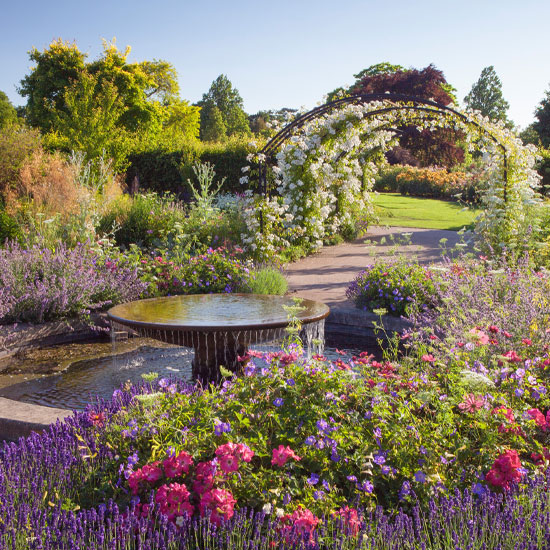
4. Wisley
Midway between Woking and Cobham lies the Royal Horticultural Society's
flagship garden Wisley. The 240-acre site is particularly famous for its roses,
Glasshouse borders and grasses, from arching Miscanthus sinensis to
fluffy Pennisetum, and the Glasshouse itself, with its impressive
collection of world-class exotic plants. There are also a series of
model gardens (in all conditions and circumstances) and trials fields,
where the RHS conduct their research of new species. The onsite bookshop
has an extensive collection. The place is a great resource for those who want to learn more about horticulture - amateurs and pros alike. Image: RHS/Lee Beel www.rhs.org.uk/gardens/wisley
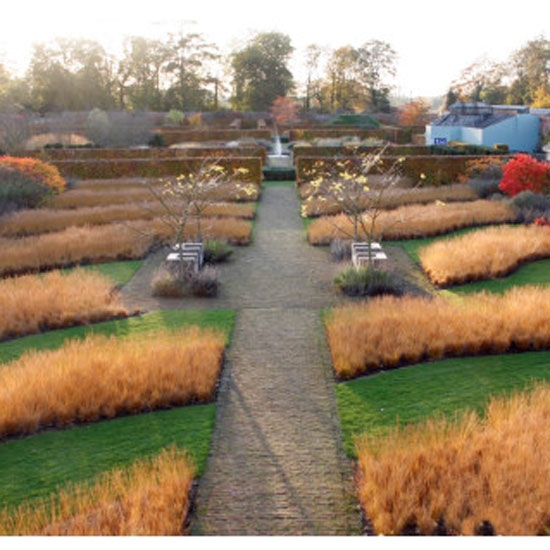
5. Scampston
This Yorkshire walled garden was designed by Dutch master Piet Oudolf. As you'd
expect, there are spectacular grasses as well as a glorious perennial flower
meadow on show here. But that's not all. There's fantastic use of topiary on a large
scale, with much thought given to shapes, heights and densities of
planting. The formal peace garden is beautifully simple and tranquil, while the
centrepiece garden is an all-immersive experience, alive with scent,
colour and pattern. A lot of ideas to take away here. Would-be designers take note! www.scampston.co.uk
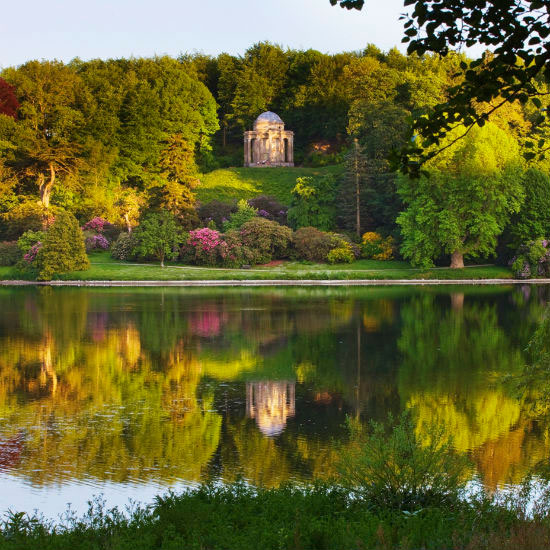
6. Stourhead Formal, lofty, grand-scale (the estate covers 2,650 acres!) - when this mighty Wiltshire place first opened in the 1740s, it was called ‘a
living work of art'. It was certainly designed to impress and it still does centuries later. The extensive landscape garden has at its
centrepiece a magnificent lake, reflecting classical temples, mystical
grottos and rare and exotic trees and, amid the rhododendrons and azaleas, there are plenty of lawns to have picnics on. It's a breathtaking masterclass in classic architecture and design. www.nationaltrust.org.uk
Sign up to our newsletter for style inspiration, real homes, project and garden advice and shopping know-how
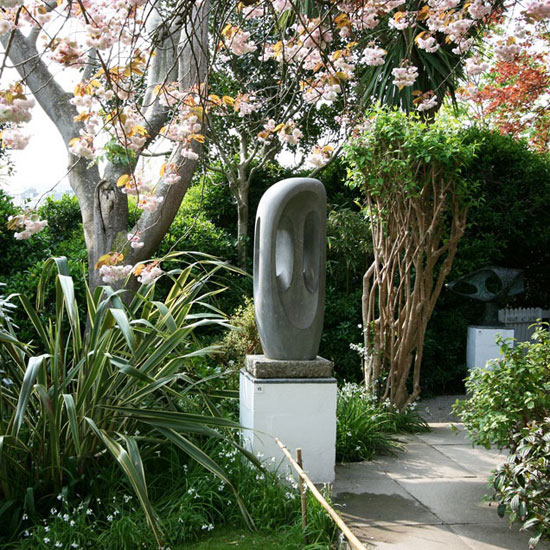
7. Barbara Hepworth Sculpture Garden
A stroll around an inspirational sculptural Cornish garden - we can't think of a better way to experience the work of one of Britain's most important 20th-century artists. Hepworth said that ‘Finding Trewyn Studio was a sort of magic. Here was a studio, a yard and garden where I could work in open air and space.' When she first arrived at Trewyn Studio, she was still largely preoccupied with stone and wood carving, but during the Fifties, she increasingly made sculpture in bronze too. This led her to create works on a more monumental scale, for which she used the garden as a viewing area. The bronzes now in the environment for which they were created and most are in the positions the artist herself placed them. www.tate.org.uk/visit/tate-st-ives/barbara-hepworth-museum-and-sculpture-garden

8. The Roof Gardens in Kensington
One hundred feet above the bustling London streets is this extraordinary urban oasis, complete with fab panoramic views of the city and resident flamingos. What's not to like? Inspired by New York's Rockefeller Centre garden, Kensington's sky greenery includes a Spanish garden, a Tudor garden and English woodland. Highlights include a carp-filled lake and colonnades and a campanile in the style of the Alhambra. There are 100 different species of full-sizd trees here. Not bad considering the soil is only 1.5m deep. The power of nature, eh? Free, but booking is essential. http://www.virginlimitededition.com/en/the-roof-gardens

9. Eltham Palace
A former medieval palace, Stephen and Virginia Courtauld
transformed this Greenwich site into a stunning Art Deco home in the Thirties. Now the 19-acre gardens are a rare example of an Arts and Crafts style, with a mix of medieval features woven into the
landscape. Highlights include the Sunken Rose Garden, planted with
scented hybrid musk roses, and several 'garden rooms' created in Thirties fashion. The Rock Garden, with pools and cascades, offers a fab view over the
moat and lawns to the house. The
herbaceous border was designed by award-winning garden designer Isabelle Van
Groeningen. www.english-heritage.org.uk

10. Alnwick
garden
You've probably already seen Alnwick's amazing Poison Garden - it has been featured in numerous documentaries and was also used as a setting in Harry Potter film The Philosopher's Stone, as well as Downton Abbey. With such impeccable credentials, you already know this Northumberland gem is a good place to visit with the family. Highlights include the Water Cascades, fountains, roses, the Bamboo Labyrinth and, of course, the largest tree house in the world. Great fun! www.alnwickgarden.com
Tamara was Ideal Home's Digital Editor before joining the Woman & Home team in 2022. She has spent the last 15 years working with the style teams at Country Homes & Interiors and Ideal Home, both now at Future PLC. It’s with these award wining interiors teams that she's honed her skills and passion for shopping, styling and writing. Tamara is always ahead of the curve when it comes to interiors trends – and is great at seeking out designer dupes on the high street.